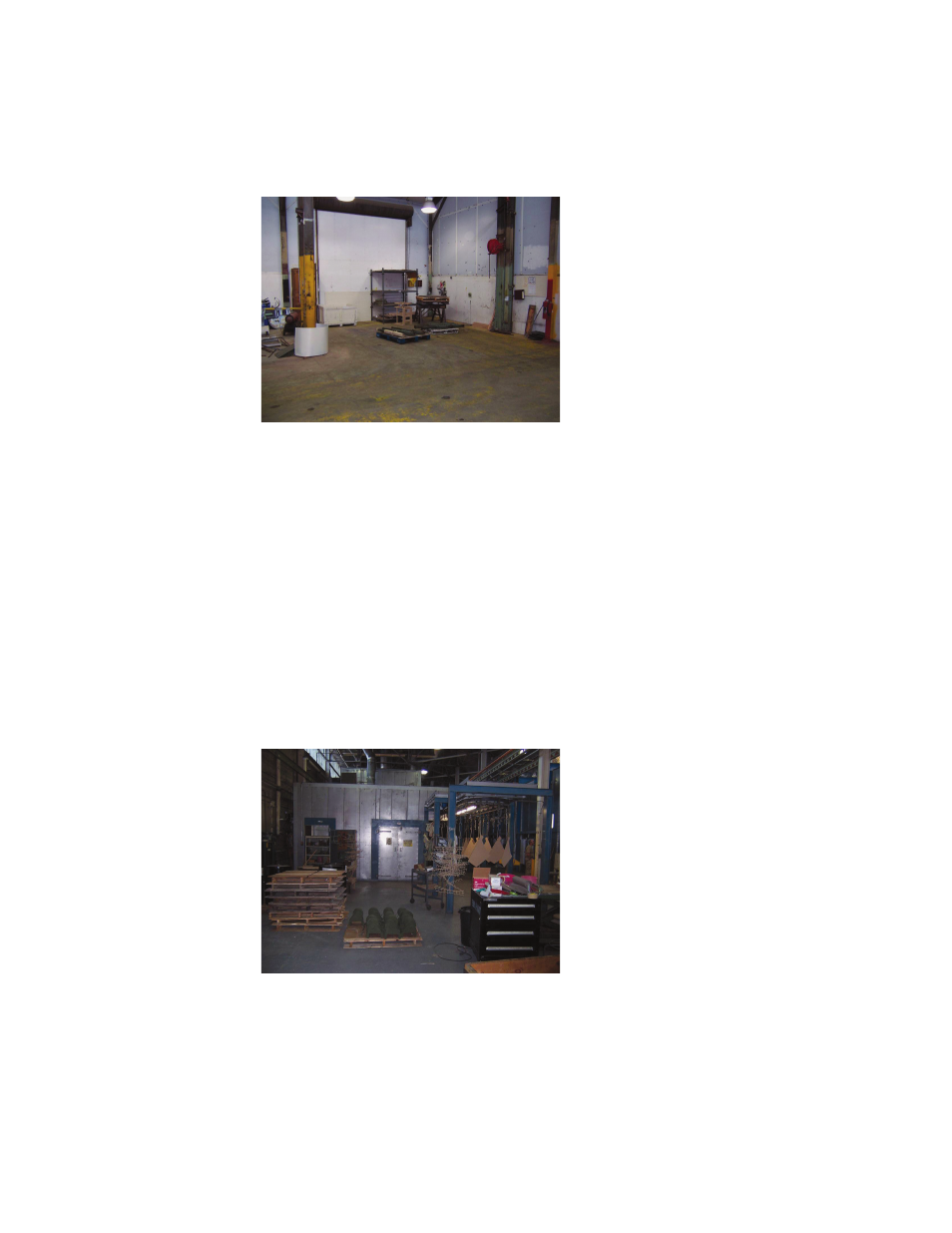Retrotec USACE User Manual
Page 238

D108 ENERGY & PROCESS ASSESSMENT PROTOCOL
the proper temperature. They also may be placed indoors to warm up. If these
items are too cold to be painted but are painted anyway, the paint will not dry
and cure properly, and the protection the paint is intended to provide may be
jeopardized.
Figure D168. Location adjacent to paint
booth used to place items from outside to
allow them to reach room temperature before
painting.
D.7.1.3 Operating Paint Booths under Positive Pressure Resulting
in Paint Fumes in Adjacent Spaces (Ineffi ciency)
The activity of painting generates an atmosphere that has a high concentra-
tion of solvent fumes and paint particles. Neither is healthy to breathe, and
high concentrations can be dangerous. To contain these contaminants within
the paint booth, a greater amount of air is exhausted than is supplied, which
puts the booth under negative pressure. If there is less exhaust air than air
supplied, a positive pressure results and there would be a high likelihood that
paint fumes are escaping the booth and entering adjacent spaces.
D.7.1.4 Failure to Recirculate More Than 70% of the Oven-Heated
Air (Ineffi ciency)
Figure D169. Paint drying oven with
recirculation of oven air. Note the small
exhaust duct to outside.
For the fi rst few minutes after a part has been painted there is a fl ash-off of
paint solvent. Then the paint continues to dry and cure. This process often
occurs in an oven, where the temperature can be slightly raised to better con-
trol the drying and curing. Since the paint fume release is quite low after the
fl ash-off period, a large percentage of the oven air can be recirculated (Figure
